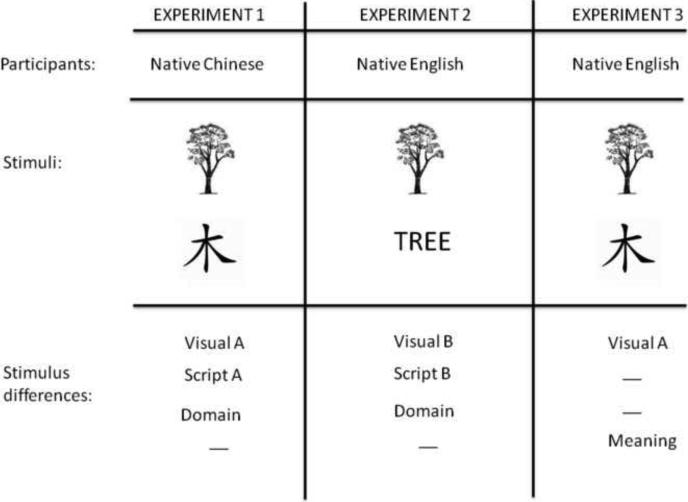Figure 1.
Summary of the conditions tested in Experiments 1–3 and the logic behind the cross-experiment comparisons. For a given time-window in the ERP analyses, a picture-word ERP difference is observed in each experiment, and can be associated with differences in the picture and word stimuli presented in each experiment (stimulus differences). These differences can be visual, and therefore not the same for Chinese and English words (visual A, visual B). They can be related to expertise with a given script (script A, script B), related to differences in domain (pictures, words), or whether the stimuli are meaningful or not. Contrasting the observed ERP picture-word differences across experiments can help isolate effects that are likely to be driven by one particular stimulus difference.

